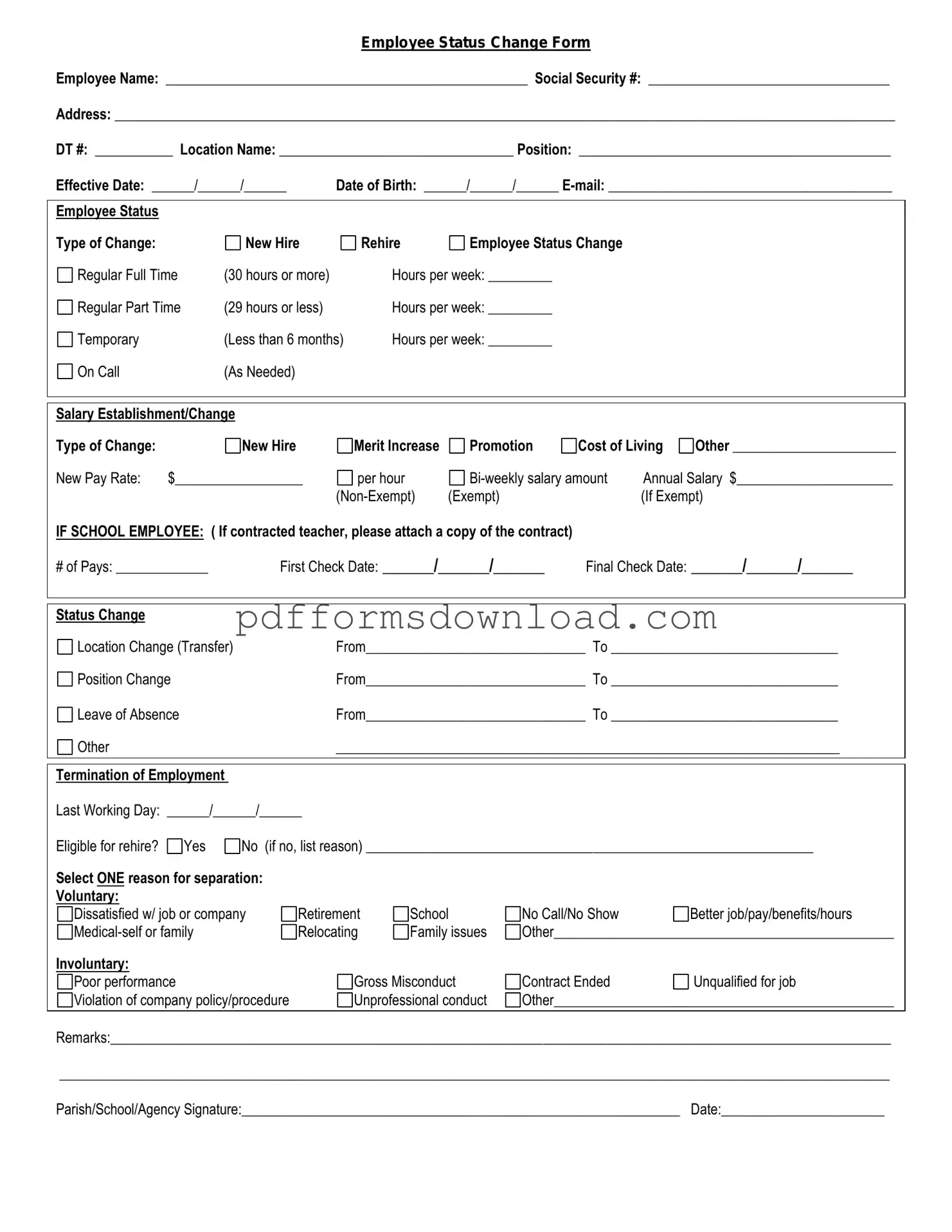Download Employee Status Change Template
The Employee Status Change form is a crucial document used by organizations to formally record any changes in an employee's status, such as promotions, transfers, or terminations. This form ensures that all necessary updates are communicated effectively and accurately within the company. To keep your records up to date, make sure to fill out the form by clicking the button below.
Make This Document Now
